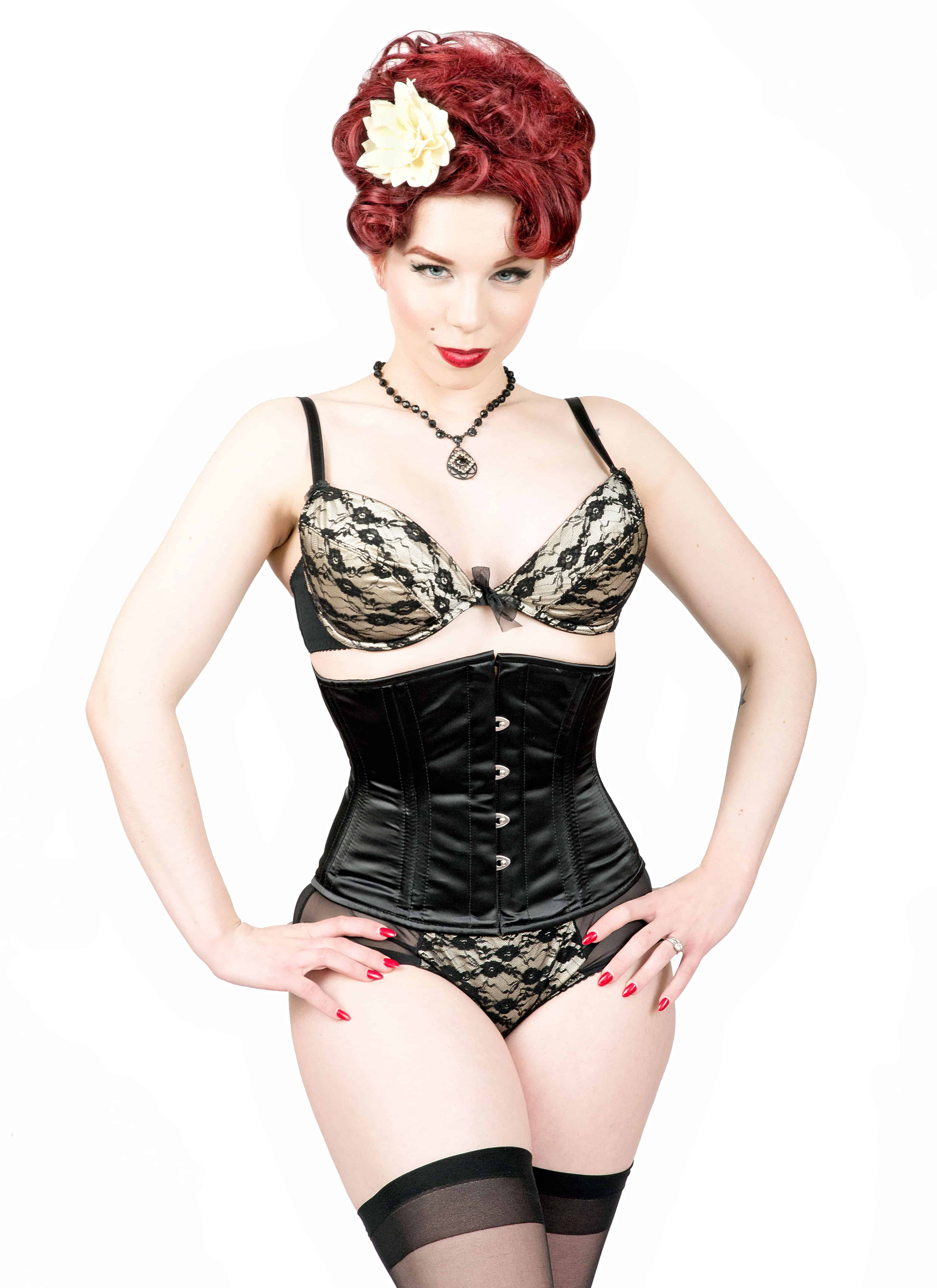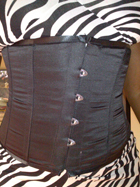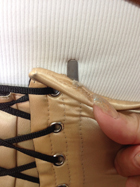Most girls never have any problems with their corsets and/or waist training regime, but some struggle with garments that may be ill-fitting, pinch, not sit straight etc. A well-constructed corset if the correct size, fitted correctly and broken-in correctly will be a comfortable garment to wear for hours on end.
 If you start to have any waist training issues or corset problems then read this simple guide to assess the issue and the solution to the problem. The best way to ensure you have a trouble-free and comfortable life of wearing corsets is to start with a garment intended to be used for the practice of tight-lacing. At the very least it should have steel boning throughout, strong metals busk plates for the fasteners at the front, brass grommets/eyelets for the strong cord lacing to run through and thick cotton twill lining no matter what the outer panel structure is (satin, leather, cotton etc). Given that you know where to find a garment here at www.GlamourBoutique.com the next most important point is to get the correct style and fit. Read carefully the description of each corset model to try and match it to your body type and it’s intended purpose. For example if no taller than 5’5″ then you most probably will be better suited to a shorter cincher. However if you have a pouch belly then you will need a regular Underbust Corset with it’s little added length at the bottom to cinch in the belly as well as the waist. Find it all dazzling to choose from then simply call us on the FREEphone where our live, experienced staff will happily guide and assist you.
If you start to have any waist training issues or corset problems then read this simple guide to assess the issue and the solution to the problem. The best way to ensure you have a trouble-free and comfortable life of wearing corsets is to start with a garment intended to be used for the practice of tight-lacing. At the very least it should have steel boning throughout, strong metals busk plates for the fasteners at the front, brass grommets/eyelets for the strong cord lacing to run through and thick cotton twill lining no matter what the outer panel structure is (satin, leather, cotton etc). Given that you know where to find a garment here at www.GlamourBoutique.com the next most important point is to get the correct style and fit. Read carefully the description of each corset model to try and match it to your body type and it’s intended purpose. For example if no taller than 5’5″ then you most probably will be better suited to a shorter cincher. However if you have a pouch belly then you will need a regular Underbust Corset with it’s little added length at the bottom to cinch in the belly as well as the waist. Find it all dazzling to choose from then simply call us on the FREEphone where our live, experienced staff will happily guide and assist you.
You think you chose correctly both model and size, you read the accompanying instructions before wearing but you are having issues. No fear, we have you covered with our simple Issue and Solution Guide.
Read More:
Common corset problems and how to solve them
Something’s not right – your corset looks great but the comfort level and/or look of it on you doesn’t look as you expected it would. What could be wrong? Here we’ll talk through common problems with waist trainers and corset problems.
Corset digging into breast
Your Corset is too long and prolonged wearing will lead to discomfort and could lead to damage of any implants being used. It may also be possible you are wearing the corset too high up the body. Solution: Make sure the corset is correctly positioned and not riding high. If it is you need a shorter corset.
Corset digging into thigh/breast
Your corset is uncomfortable digging into your hip and may even dig into the thigh when sitting for prolonged periods. Solution: Ensure the corset is fitting correctly at the right level and not being warn too low. If it is you may need a shorter corset. If it is only uncomfortable when sitting and your drop is deskbound then we suggest using a shorter corset just for the work day.
Corset twisting
Your corset will not line up straight and over time the twisting/slanting grows worse and worse. This can be caused by a number of factors: uneven lacing tension when lacing up the corset, too large a gap (too small a corset) between the laces thus compromising the ability of an even cinch and even a crooked back. Solution: Make sure you get the right size corset – there should not be more than a 3.5” gap between the laces when cinched. Break the corset in over 2 weeks and tighten the laces slowly and evenly every time as per the instructions with your corset. If you have more than a 3.5” corset on the first time of trying the corset we suggest you exchange it for a bigger corset to ensure trouble free lacing.

Sore ribs
You have sore ribs when wearing the corset. When new to corseting you need to take your time and start slow in the cinching process to allow the corset and the body to get used to tight lacing. Solution: Do not tighten so much in the rib area and slow down the breaking in process at the beginning. Consider wearing a liner to help cushion the ribs and hips.
Popping steel bones
This is where the bones literally pop out of the top of the corset. This can happen over time with prolonged use and tight lacing. Often caused by not breaking in the corset slowly enough at the beginning. The steel bones need time to soften so this does not happen. Solution: You can have a seamstress simply mend and strengthen the area with strong webbing or thick cotton webbing. Alternatively, if you wear every day we suggest you have more than one corset to rotate them daily and so allow each one a resting period between wearing.

Ripped seams
You start to see ripped seams and frequently in the top of the lower part of the corset where the stitching appears to come away from the bones and become frayed. Again, often a symptom of not breaking in the corset slowly enough and also tightening too hard in the boney areas of the rib cage and the hips. Bone like the hips cannot be cinched so if you try to tighten those areas as much as the soft fleshy waist there is a good chance you will damage your corset. Solution: Break in the corset slowly and carefully before building up to tight-lacing your corset. Resist the urge to try to cinch the rib cage and the hips as hard as the soft fleshy waist area. Also, think about investing in a Double Boned Corset or Cincher that are reinforced for such rigors.
These are the main issues we hear about from newbie tight-lacers/waist trainers when they do have a problem. Most folk get it right the first time by following the instructions so make sure you read everything that accompanies your first corset so you are well informed and know the correct procedure for both tightening and breaking in your corset. If you recognize the fit is not correct on your first wearing then remove it and contact the retailer to exchange it out.
Get the selection/model right for your body type, get the size right and follow the easy instructions for the first time wearing and breaking in the corset and you will have no problems. If in doubt, call us on 1 888 721 8688 and we’ll be glad to assist you. Happy Cinching!
